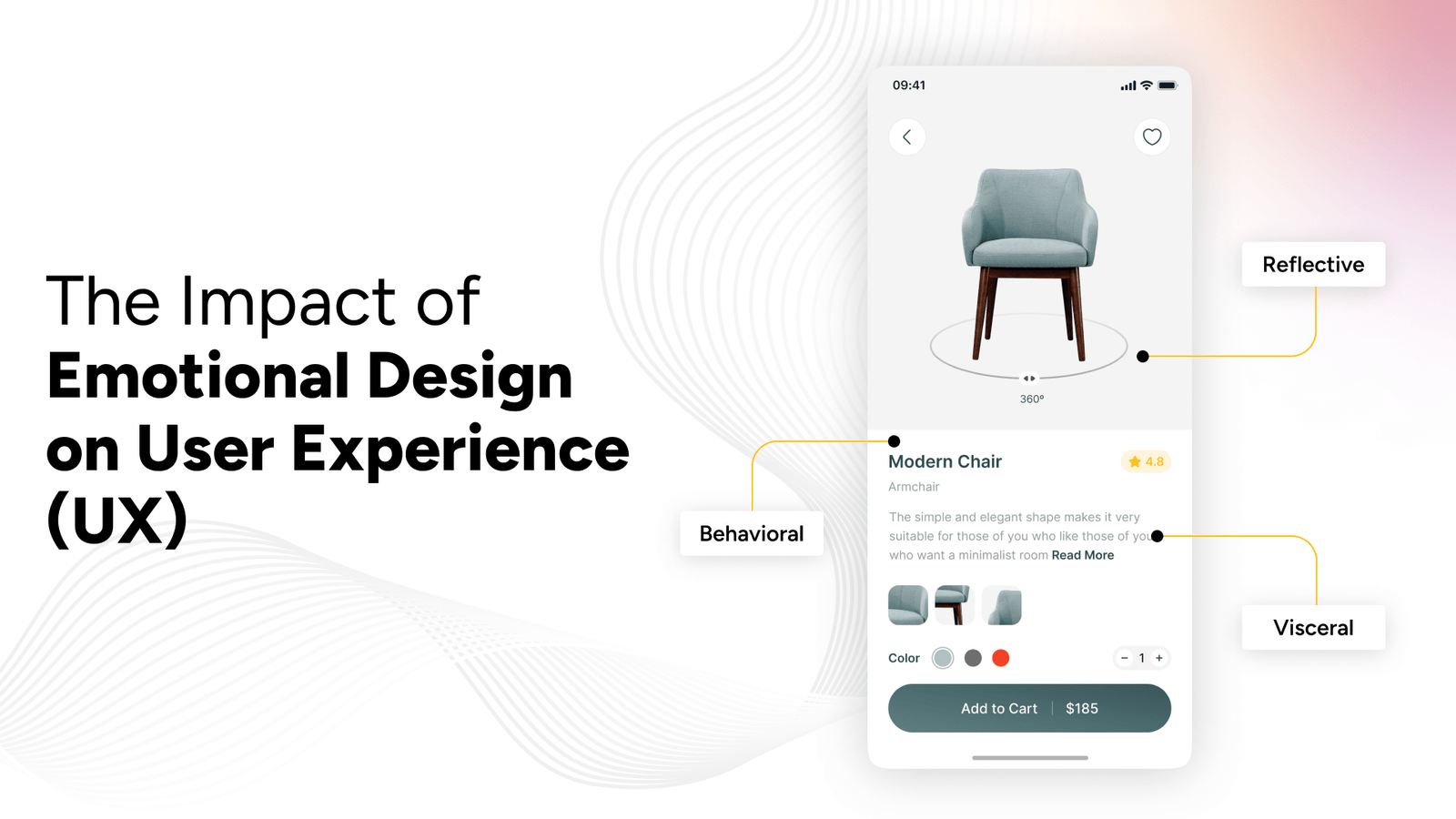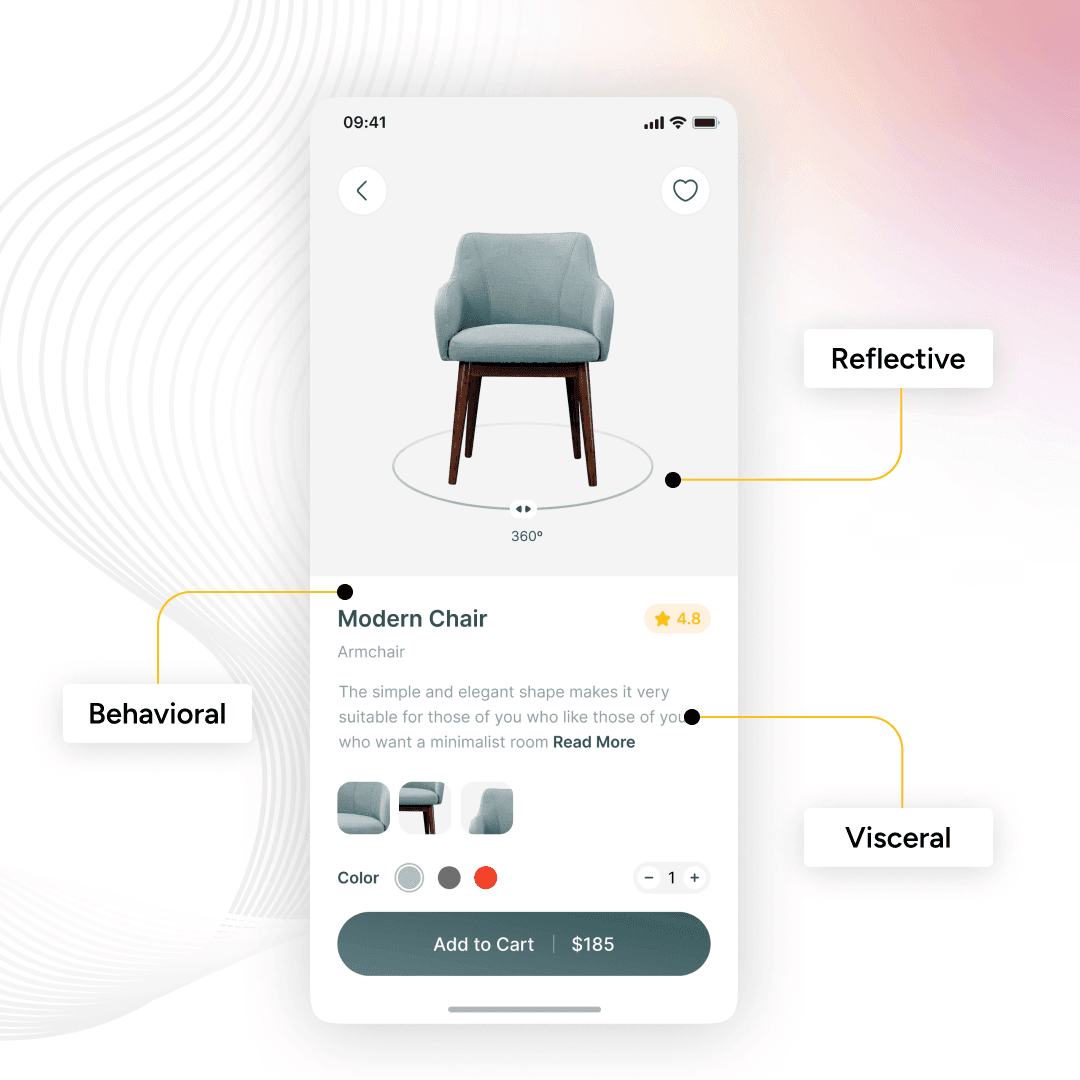In the realm of user experience (UX) design, functionality and aesthetics are integral, but the emotional resonance a product or interface elicits can be transformative. This article delves into the profound influence of emotional design on UX, exploring how understanding and leveraging human emotions can elevate digital experiences to new heights.
Defining emotional design in UX
Emotional design goes beyond the surface, tapping into the user’s emotions to create a connection with a product or service. It involves the intentional design of elements that evoke specific feelings, fostering a memorable and meaningful user experience.
The three levels of emotional design
- Visceral level: The immediate, instinctive reaction to a design’s visual and sensory aspects. It’s the initial gut feeling that sets the tone for the user’s interaction.
- Behavioral level: The response a user has based on the usability and functionality of a product. This level involves the user’s experience in interacting with the design and the emotions triggered during usage.
- Reflective level: The long-term impression and emotional connection a user forms with a product or brand. It extends beyond the immediate interaction, influencing brand loyalty and user advocacy.
The Impact of Emotional Design on User Engagement
- Enhanced user engagement: Designs that evoke positive emotions capture and maintain user attention. Whether through visually pleasing aesthetics or interactive elements, emotionally engaging interfaces encourage prolonged engagement.
- Building user trust and loyalty: Emotional design contributes to building trust by creating a sense of empathy and understanding. Users are more likely to remain loyal to products that resonate with their emotions and values.
Leveraging emotional design principles
- Color psychology: Colors evoke specific emotions. Understanding the psychological impact of colors allows designers to create visual experiences that align with the desired emotional tone.
- Typography and tone of voice: The choice of typography and the tone of voice in communication contribute to the emotional tone of a design. Consistency in language and messaging reinforces the emotional connection.
- Storytelling through design: Incorporating narratives into the design process establishes an emotional connection by engaging users on a personal level. Storytelling can evoke empathy, making the experience more relatable.
Usability and emotional design: A synergistic approach
- Functionality meets emotion: While usability is fundamental, emotional design enhances the user’s overall experience. Striking a balance between functionality and emotional appeal results in interfaces that are both efficient and emotionally resonant.
- Anticipating user emotions: Designers can use personas and empathy maps to anticipate user emotions at different touchpoints. This allows for proactive design decisions that address potential pain points and enhance positive experiences.
Measuring emotional impact: User feedback and analytics
- Qualitative feedback: Gathering user feedback through interviews, surveys, and usability testing provides insights into the emotional impact of a design.
- Quantitative analytics: Utilizing analytics to track user behavior, engagement metrics, and conversion rates helps gauge the success of emotional design elements in achieving desired outcomes.
Designing for the heart and mind
In conclusion, emotional design is not merely an aesthetic choice; it’s a strategic approach that taps into the fundamental aspects of human connection. By understanding and incorporating emotional design principles, designers can create experiences that not only meet functional needs but also resonate with users on a deeper, emotional level. The intersection of usability and emotional appeal is where digital interfaces become not just tools but companions, enriching the lives of users through meaningful and memorable interactions.







